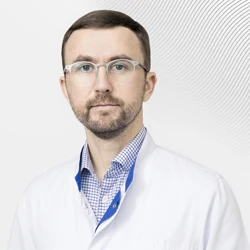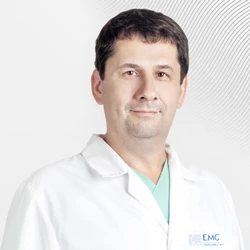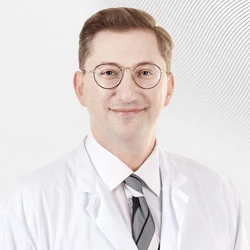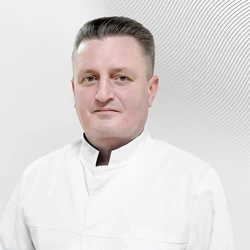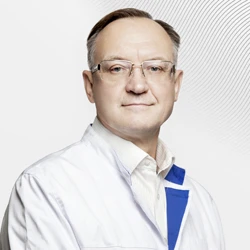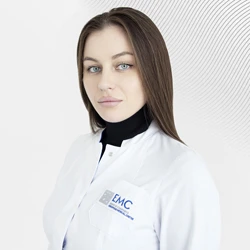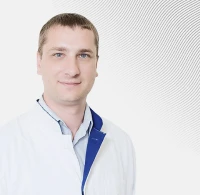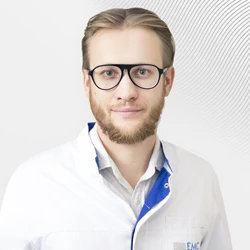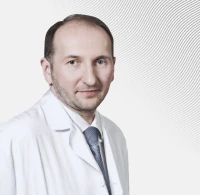Migraine — diagnosis, treatment and prevention
Author: Neurologist, doctor of functional diagnostics Alexander Shchelukhin, member of the European Academy of Neurology
Migraine is a disease characterized by episodic paroxysmal headaches of considerable intensity, which are usually accompanied by nausea and/or hypersensitivity to light and sounds. Migraines are also characterized, but not necessarily, by increased pain during exercise and walking, pulsating, unilateral, or predominant on one side. It is characterized by a decrease in working capacity, working capacity, up to complete loss during an attack. Decreased quality of life with frequent seizures.
This disease can significantly impair the quality of life, leading to a temporary decrease or temporary disability over a certain period of time. Therefore, it is important to carry out proper treatment, adequate relief of seizures and prevention of migraine attacks, both medicinal and behavioral, by following lifestyle recommendations, avoiding risk factors, provoking factors, the so-called "triggers" of migraine. The diagnosis of migraine is mainly based on the collection of complaints and anamnesis, a description of the characteristics of seizures, details and the nature of pain, all details are important and a detailed conversation is required at the initial admission.
In some cases, neuroimaging methods such as MRI and CT are used to exclude other diseases masquerading as migraines. Less often, blood tests, EEG, cardiological examination, ultrasound of the vessels of the neck and head, lumbar puncture with analysis of cerebrospinal fluid may be required.
Headache types
Among patients seeking medical help with headache, primary forms of headache predominate (90-95%): migraine and tension headache. Rarer forms of primary headache are cluster headaches associated with physical exertion, cough, sexual activity, etc.
Tension headache is bilateral, squeezing "like a hoop, helmet," not pulsating, monotonous. Secondary headaches are symptomatic of the underlying disease (organic lesions of the brain, face, neck, systemic diseases, neuralgia, facial pain), are much less common (5-10%).
Epidemiology:
Migraine is one of the most common reasons for contacting a neurologist in daily medical practice. According to statistics, up to 12% of the world's population suffers from this type of headache. Women get sick more often. Most often, people suffering from migraines consult a doctor in connection with intense attacks that significantly worsen their quality of life at the age of 30-40 years. There is a genetic predisposition to this disease: if one of the closest relatives has migraines, the risk of seizures is higher.
What causes migraines
According to modern concepts, the mechanism of occurrence of a migraine attack is based on the dysfunction of pain centers in the stem structures of the brain, depression of the bioelectric activity of the cerebral cortex, excitation of the trigeminal nerve system, which leads to the release of local vascular inflammatory neurotransmitters, changes in vascular tone in the arteries and veins of the dura mater, neurogenic inflammation and swelling of the vascular wall and extravascular space.
The main role in understanding the mechanisms of migraine is given to the dysfunction of the trigeminal nerve system.
Neurotransmitters that play a significant role in the mechanism of migraine:
-
Serotonin: the role is not fully understood, however, activation of serotonin receptors is used to stop seizures (drugs of the triptan group), and serotonin reuptake inhibitors that increase its concentration (antidepressants) can reduce the frequency of seizures.
-
Calcitonin-related peptide gene (CGRP): the most promising neurotransmitter in the treatment of frequent seizures to date. Antibodies to this mediator are the most modern and promising group of drugs for the prevention of migraine attacks. During an attack, an increase in the level of CGRP in the venous blood and in the cerebrospinal fluid is detected. CGRP is secreted by the neurons of the trigeminal nerve system and triggers the processes of neurogenic inflammation and edema in the vessels and surrounding tissues.
What triggers a migraine attack:
-
Irregular meals during the day, hunger
-
Alcohol (especially red wine)
-
Stressful emotional situations
-
Lack or excess of sleep, a change in the usual sleep pattern
-
Some products: nuts, hard cheeses, chocolate, products containing glutamate, nitrites, aspartame, fats
-
Smoking
-
Weather changes
-
Premenstrual syndrome
-
Neck pain, neck and shoulder girdle muscle spasm
-
Bright light, flashing light
-
Heat
-
Excessive physical activity
-
Sexual activity
-
Unpleasant smell
-
Pathology of the temporomandibular joint
The risk of migraines is higher with low physical activity and obesity.
Migraine symptoms:
-
Prodromal period: some patients experience a stereotypical change in well-being that precedes an attack. These may be emotional and psychological changes or vegetative symptoms. Mood changes are most often described – euphoria, depression, depression, irritability; neck pain, stiffness in the neck; yawning, drowsiness; changes in appetite. These symptoms can occur 24-48 hours before a migraine attack.
-
25% describe a migraine aura before or during a headache attack. Migraine with aura was previously called a "classic migraine." Aura is a symptom of migraine, reflecting depression of bioelectric activity in the cerebral cortex. Depending on the area of the cortex where a violation of bioelectric activity occurs, certain focal neurological symptoms occur: impaired vision, sensitivity, and hearing. The aura can be positive (flashes in the eyes, tinnitus) and negative (loss of vision, hearing, numbness).
The usual aura duration is 30-60 minutes. Sometimes longer.
Aura most often precedes a migraine headache. With the completion of the aura, the headache begins. According to recent data, aura often accompanies a headache in parallel.
The most common aura is visual. Blurred vision, zigzags, "lightning", silver or golden color, gradually increases, lasting up to 1 hour.
Less often – sensory aura (numbness of the face, limbs), motor aura (involuntary movements).
Vestibular aura in the form of rotational vertigo.
There is a form of migraine in the form of an aura without a headache, that is, attacks of an isolated aura occur.
-
Headache is the main symptom of migraines. It occurs after the prodromal period and aura (if any).
-
The intensity is often medium or high, up to unbearable
-
The character is more often pulsating, undulating, especially with increasing pain intensity
-
The character is more often one-sided or with an accent on one side in half of the head
-
May radiate to the eyeball or neck area with an accent on one side
-
It increases with physical exertion, walking, bending, coughing, sneezing
-
It is accompanied by painful hypersensitivity to loud sounds and bright light
-
With migraines, "I want to lie down, close the door, close the curtains"
-
It may be accompanied by hypersensitivity of the scalp and neck
-
May be accompanied by nausea, vomiting, especially at high intensity
-
The duration of the pain attack is from several hours to several days, more often 4-12 hours.
-
It usually goes away after falling asleep.
-
4. Postdromic (post-seizure period) – after an intense migraine attack, some patients report fatigue, absent-mindedness, weakness, and soreness during sudden movements in the area of the head where the migraine pain was, a feeling of "empty head".
Diagnostics
The diagnosis of migraine is mainly based on the typical manifestations of the disease revealed by examining the patient's complaints and history. The diagnosis is clinical and requires a detailed collection of complaints, anamnesis, and neurological examination of the patient.
The diagnosis of "migraine" is more likely with symptoms associated with headaches such as nausea, phonophobia and photophobia, and restriction of physical activity.
According to the International Classification of Headaches 3 edition (ICHD-3), there are clear criteria (features of headache in a patient), when a certain combination of which is detected, the diagnosis of "migraine" is established.
Neuroimaging (MRI, CT) is not necessary in all cases. According to international recommendations, it is necessary to conduct these studies if the secondary nature of pain is suspected, if the headache is caused by another disease, as well as if violations are detected during examination in neurological status, with atypical manifestations, symptoms, and features.
Migraine forms:
Episodic – less than 15 seizures per month. Often 1-2 attacks or 1 attack every few months.
Chronic – more than 15 seizures per month for 3 months over the past year.
It is established reliably when keeping a headache diary.
Migraine treatment
Migraine treatment includes:
-
migraine attack treatment
-
preventive treatment aimed at preventing seizures with frequent attacks
Treatment of a migraine attack:
The drug should be taken as early as possible: at the onset of an aura or at the onset of a headache.
-
Analgesics (painkillers) – aspirin, paracetamol, ibuprofen, naproxen, indomethacin.
In the case of moderate pain, caffeine can help.
Analgesics should not be taken too often, no more than 8-10 tablets per month, otherwise addiction may occur, resulting in the development of so-called abusive (drug-related) headaches.
-
If analgesics are ineffective, triptans (sumatriptan, eletriptan, etc.), specialized drugs for the treatment of migraines, are prescribed. They activate serotonin receptors and are able to interrupt the pathological mechanism of migraine attack development. There is a risk of side effects and limitations, contraindicated during pregnancy, with serious diseases of the cardiovascular system. Triptans exist in the form of tablets, capsules, and nasal spray (which makes it easier to take the drug in case of severe nausea). The specific drug is selected individually. More than 8-9 doses per month is a risk of addiction, the development of drug-induced headaches (excessive).
-
Antiemetics, such as metoclopramide in tablet or injectable form, are used for nausea and vomiting.
Migraine prevention
With ineffective treatment of seizures or the constant presence of factors that provoke migraines, it is possible to increase the frequency of seizures and their intensity, up to the transition to the form of chronic migraines, which can lead to a significant decrease in the quality of life, restrictions in daily activity, decreased or temporary disability.
In this case, preventive migraine therapy is carried out, aimed at routine medication intake in order to prevent seizures. A number of drug groups are used. It is equally important to follow lifestyle recommendations, avoid risk factors and "triggers".
-
Beta blockers: drugs from cardiology to reduce blood pressure and treat tachycardia. Indicators of effectiveness in the form of migraine prevention in a number of patients. Metoprolol and anaprillin are commonly used.
-
Antidepressants (amitriptyline, etc.). They can cause drowsiness, usually prescribed at night. Modern drugs have a lower risk of adverse reactions. By increasing the concentration of serotonin in the nervous tissue, the risk of pathological mechanisms leading to a migraine attack is reduced.
-
Anticonvulsants (antiepileptic drugs). Anticonvulsants Topiramate and Valproate have been shown to have an antimigrenous effect. They are often used to prevent seizures when the course worsens. They may cause drowsiness, loss of appetite, and decreased concentration.
-
The course of treatment with preventive therapy usually requires at least 3 months and can be extended according to clinical needs. Preventive migraine therapy is also used for overdose of analgesics and the occurrence of drug-related headaches.
-
Botulinum toxin type A. The drug is used to treat chronic migraine when it is combined with symptoms of neck pain, neck muscle spasm. It shows good effectiveness, it has been used in Russia since 2011 for the treatment of migraines. In the USA since the early 2000s. Small doses of the drug are injected into the most frequently painful points in the muscles of the head, neck, and shoulder girdle, where there are areas associated with the systemic trigeminal nerve and stimulating the trigeminal nerve during muscle spasm in these areas.
-
Calcitonin antagonists are a related peptide gene (CGRP), the most promising and new group of drugs. Artificially synthesized antibodies to CGRP molecules or receptors of this neurotransmitter. They are used as subcutaneous injections once a month. Several drugs have been registered in the USA since 2018 and are actively used in clinical practice, showing good effectiveness. There are no side effects typical of antidepressants and anticonvulsants. In the Russian Federation, they are in the process of registration, possibly they will appear in 2020.
Physiotherapy treatment
When migraines are combined with neck pain, hypertension, and muscle spasm of the scalp, neck, and shoulder girdle, physiotherapists are involved. Often, the appearance of spasms in the neck muscles, in the trapezius muscles are a trigger for migraines and trigger an attack. Prevention of muscle spasm in this case is the prevention of migraines.
Physical therapy, gentle massage, muscle techniques of manual therapy, acupuncture, and hardware physiotherapy are used for hypertension.
Prevention of musculotonic phenomena in this area is regular gymnastics, swimming.
There is evidence of the effectiveness of external electrical stimulation of the trigeminal nerve projection zones in the head and neck. Hoops for daily treatment are available on the market.
Psychotherapeutic treatment
In case of significant stress, psychoemotional instability, depression, the involvement of a psychiatrist or a psychotherapist is required. Depression and anxiety disorders provoke and worsen migraines. Techniques of psychotherapy, auto-training, meditation, relaxation training are used. Migraine prevention behavior, lifestyle recommendations:
It is advisable to limit the influence of factors that can provoke a migraine attack:
-
irregular meals during the day, hunger;
-
alcohol (especially red wine);
-
stressful emotional situations;
-
lack or excess of sleep, a change in the usual sleep pattern;
-
some products: nuts, hard cheeses, chocolate, products containing glutamate, nitrites, aspartame;
-
smoking.
Behavioral Tips for Seizure Prevention:
-
Regular moderate physical activity (aerobic exercise, cardio training – walking on a treadmill at a fast pace, exercise bike, swimming, fitness) at least 1-2 times a week;
-
Normalization of sleep and rest: falling asleep and waking up at the same time on weekdays and weekends, relaxing activities before bedtime;
-
Normalization of the diet: do not skip meals, it is useful to keep a food diary to identify provocative foods;
-
If possible, avoid such provocative factors as bright intermittent light, excessively loud sounds;
-
Keeping a "headache diary" to assess the course of migraines over long periods of time – on paper or in a smartphone application, this data is very important for the attending physician!
-
Stress control: relaxing activities, if necessary, consultation with a psychotherapist to correct stress effects;
-
With frequent tension, spasm of the muscles of the neck, shoulder girdle, shoulder blades – measures to reduce spasm (physical education, swimming, massage).
Tips for behavior during a migraine attack:
-
Taking medications prescribed to stop an attack as early as possible, in the first minutes of the attack or aura (as prescribed by the attending neurologist);
-
Reduce light, loud sounds;
-
Avoid physical activity;
-
Try a temperature treatment: a cold compress on the neck or head can reduce pain, a warm compress or a warm shower can relax tense neck muscles;
-
Try drinking a caffeinated drink at the beginning of an attack, but be careful - too much caffeine can also trigger migraines.
Migraine complications
An attack that does not stop for 72 hours or more is called a migraine status. It may require hospitalization in a hospital for adequate anesthesia, selection of therapy for relief and prevention of seizures in the future.
There may be cases of persistent aura without migraines. There is a perception that some forms of migraines can lead to stroke. This is an extremely rare occurrence. There is no consensus on whether these strokes are a complication of migraine or a case of stroke in a patient with migraine for another reason. In rare cases, migraines can lead to epilepsy.
Why the EMC
The first and only clinic in Russia, created in the image of the world's leading clinics
EMC is a multidisciplinary center offering patients a high level of medical services and a personalized approach
Worldwide recognition and awards
 Learn more
Learn more
Worldwide recognition and awards
 Certificates and licenses
Certificates and licenses
Make an appointment for a consultation
Specify your contacts and we will contact you to clarify the details
Reviews
and new products of the EMC

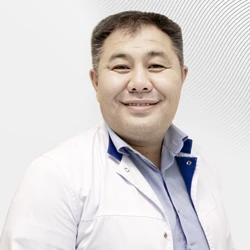
.webp)
